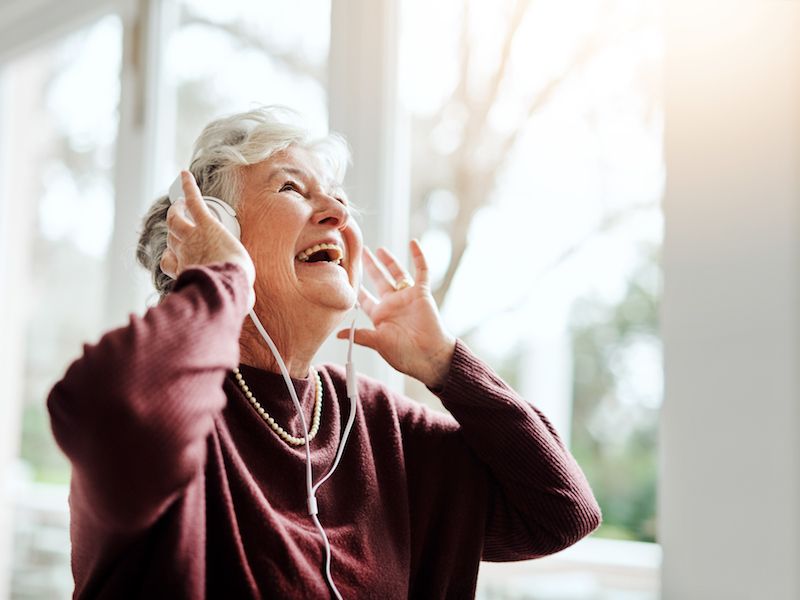
People who work in loud environments such as construction sites or at heavy metal concerts are not the only ones affected by noise related loss of hearing. Recreation related noise exposure can be just as dangerous as work related noise exposure. What kind of exposure are we discussing? Loud noise heard through headphones, whether it be gaming, streaming video, music, or even an audiobook with the volume cranked up.
You might be surprised to learn that a mobile device can get that loud. The ordinary pain threshold for human hearing is close to 150 db which is well within the range of these devices. This is the volume where noise begins to literally hurt your ears. So what can you do to protect against this type of noise-related loss of hearing?
It’s important here to consider the volume. An easy shorthand that’s widely recommended is the 60/60 rule: Listen with the volume at no more than 60% for no more than 60 minutes in a single session (because the length of sound exposure matters, too).
Create a Setting on Your Hearing Aids For Listening to Music
If you wear hearing aids, you’re most likely streaming your mobile device right to your hearing aids, so be certain the volume is not too high or that you’re not attempting to drown out other noises with your music. And there are much healthier ways to listen to music so consult us about that as well. Hearing aids aren’t designed to make music clearer like they do with voices so if really like music, you may have noticed this. We might be able to make adjustments to reduce noise and feedback while boosting some frequency to better the quality of sound when listening to music.
Selecting Headphones
If you don’t have hearing aids, there are lots of choices for shopping for headphones. It might be a matter of personal choice, but there are some things you should think about there as well.
Headphones That go Over The Ears
While the foam-covered speakers that was included with your old Walkman are basically a thing of the past, over-the-ear headphones have made a comeback. They have a lot of choices in color and style, are commonly endorsed by celebrities, and can be unexpectedly pricey. And unlike those little foam pads, these go over the entire ear, limiting outside sounds.
Conventional perception is that these are less dangerous than in-ear headphones because the source of the sound is further away from your eardrum. But because the speakers are bigger they are usually capable of much louder volume. Noise cancellation can be a good thing as long as you’re not missing needed sounds such as an oncoming vehicle. But on the positive side, you won’t need to contend with outside sound so you can enjoy your music at lower levels.
Earbuds
The standard earbuds that are included with devices like iPhones are much maligned for their inferior quality of sound, even though many people still use them because hey, they came with the phone. Particularly, with newer Apple devices, it’s simply easier to use the earbuds that were provided with the device because it most likely won’t have a headphone jack.
Earbuds also don’t cancel out noise so the downside is, you have a tendency to crank up the sound level. Again, though it’s commonly said that earbuds are problematic because you stick them in your ear so their speakers are extremely close to your eardrum, actually volume is really the biggest problem.
Occluding or Isolating Earbuds
Lots of people opt for earbuds with a rounded, rubbery tip both because they’re more comfortable than normal earbuds and better at stopping outside sounds. The rubber conforms to the shape of your ear, creating a seal that stops other noises from entering. But these earbuds can also block out noises you might need to hear and loud volume is still the number one concern. And if you use hearing aids, clearly these won’t work for you.
Several pairs might have to be evaluated before you find headphones that are what you are looking for. Your expectations, acoustically, will differ dependant on what type of use you normally give them. Enjoying your tunes at a safe volume and coming across headphones that help you do that is essential.
How to be Certain Your Hearing is Protected
Is it Safe, How Can I be Sure? If you use a smartphone, you can get an app for that, you can download the National Institute for Occupational Safety and Health’s free Sound Level Meter app. There are other apps you can get, but research has found that the dependability of these other apps is hit-and-miss (additionally, for unknown reasons, Android-based apps have proven to be less reliable). That motivated NIOSH to develop an app of their own. You can measure external sounds with the app, but sounds coming from your device’s speakers can be measured too, this means, the actual volume of what’s going to your ears. It’s a little bit of effort, but taking these kinds of protective steps can help protect your hearing.
